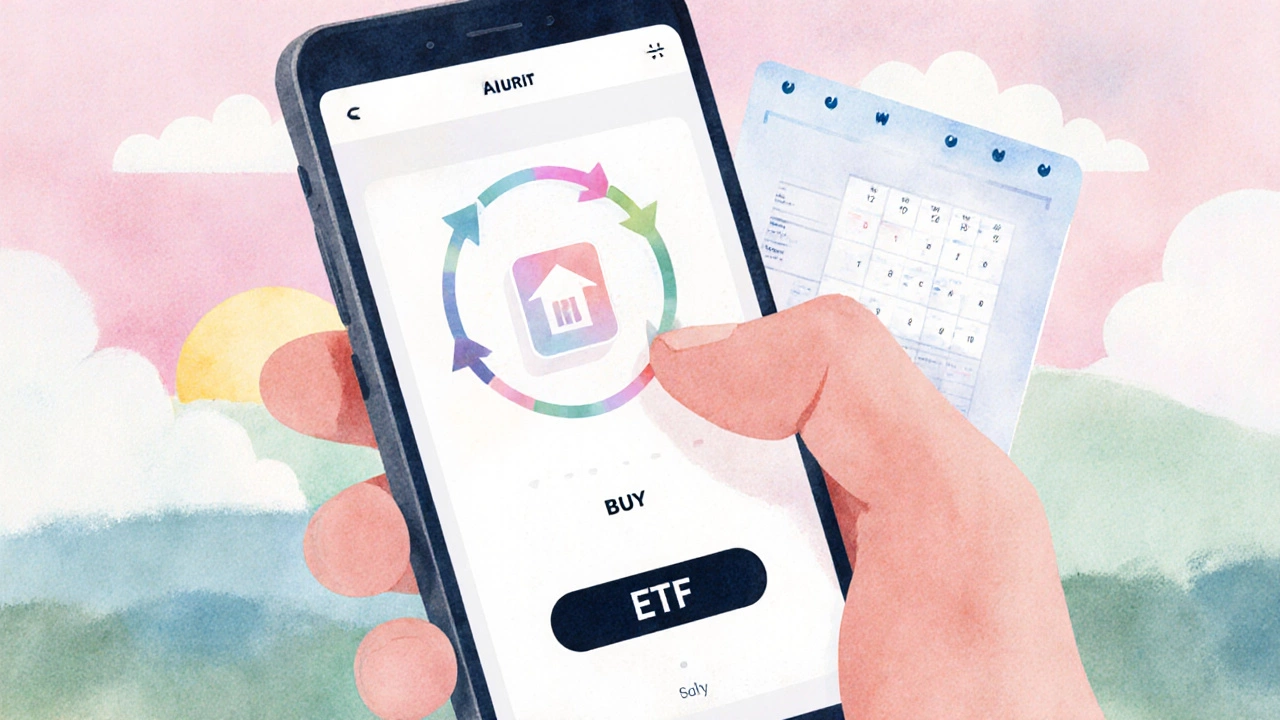
Beginner Stock Market Selector
Use this tool to find the most beginner-friendly stock market based on your location and preferences.
Recommended Market
Key Features:
Fee Information:
Important Notes
- Always verify with your chosen broker about current fees and policies.
- Consider starting with index funds or ETFs for lower risk.
- Ensure you complete KYC verification before trading.
Quick Summary
- Look for markets with low entry barriers, transparent fees, and strong educational resources.
- In 2025 the most beginner‑friendly exchanges are NYSE, NASDAQ, ASX and LSE.
- Choose a broker that offers fractional shares and a simple trading platform.
- Start with index funds or ETFs to limit risk while you learn.
- Avoid high‑frequency trading and leverage until you have a solid track record.
When you hear the term Stock market is a collection of organized exchanges where publicly listed companies sell shares to investors, the idea can feel overwhelming. You might wonder which exchange lets you dip your toe in without drowning in fees or confusing rules. This guide cuts through the noise and points you at the best stock market options for people just starting out, explains what to check before you commit, and walks you through the first steps of opening a trading account.
How to Choose a Beginner‑Friendly Stock Market
Not every exchange is built the same way. Here are the four criteria that matter most when you’re a rookie:
- Entry cost: Some markets require a high minimum deposit or charge steep per‑trade commissions. Look for low or zero‑minimum accounts.
- Fee transparency: Hidden fees eat into tiny returns. Favor exchanges where brokers list all fees openly.
- Regulatory environment: Strong investor protection (e.g., compensation schemes) gives you a safety net.
- Educational support: Platforms that bundle tutorials, webinars and demo accounts help you learn faster.
Once you rank the markets against these factors, the decision becomes a lot clearer.
Top Stock Markets for Beginners in 2025
New York Stock Exchange (NYSE)
Established in 1792, the New York Stock Exchange is the world’s largest exchange by market capitalization, home to blue‑chip giants like Apple, Microsoft and Johnson & Johnson. Why it works for novices:
- Many brokers in the US waive trading fees on NYSE stocks for accounts under $1,000.
- RegulationNMS ensures high liquidity, meaning you can buy or sell shares quickly.
- Robust investor‑protection via the Securities Investor Protection Corporation (SIPC).
The downside is that the US tax system adds a layer of complexity, but most global brokers handle the paperwork for you.
NASDAQ
Founded in 1971 as the first electronic exchange, the NASDAQ is known for technology‑heavy listings, including Google, Amazon and Tesla. For beginners it offers:
- Zero‑commission trades on most US‑based platforms.
- Fractional‑share purchasing, letting you invest as little as $1 in pricey tech stocks.
- Extensive educational hubs from brokers like Robinhood, Fidelity and Charles Schwab.
Because it’s tech‑centric, volatility can be higher than the NYSE, so pairing NASDAQ exposure with diversified ETFs is a good risk‑management move.
Australian Securities Exchange (ASX)
Australia’s premier exchange, the Australian Securities Exchange is the primary marketplace for Australian companies such as Commonwealth Bank, BHP and CSL, serves residents and overseas investors alike. Beginner perks include:
- Low‑cost brokerage options like SelfWealth and Stake, often under $5 per trade.
- Clear regulatory oversight by the Australian Securities and Investments Commission (ASIC).
- Local support for tax reporting - capital gains tax calculations are integrated into many broker statements.
If you’re based in Sydney, the ASX lets you trade in Australian dollars, removing foreign‑exchange risk.
London Stock Exchange (LSE)
With roots dating back to 1801, the London Stock Exchange is the leading European market, listing firms like HSBC, Unilever and the FTSE100 index. Advantages for newbies:
- Many UK‑based brokers (e.g., Hargreaves Lansdown, Freetrade) offer free trades on LSE shares.
- Investor compensation via the Financial Services Compensation Scheme (FSCS) up to £85,000.
- Strong educational ecosystems, often bundled with membership clubs.
Currency conversion to GBP can add a small cost for overseas investors, but many platforms provide competitive FX rates.
Side‑by‑Side Comparison
| Market | Primary Currency | Typical Beginner Fees | Ease of Access | Local Investor Protection |
|---|---|---|---|---|
| NYSE | USD | Zero commission on most platforms; $0‑$1 per trade for some brokers | High - many apps support direct NYSE trades | SIPC up to $500,000 |
| NASDAQ | USD | Zero commission; fractional shares from $1 | Very high - fully electronic | SIPC up to $500,000 |
| ASX | AUD | AU$4‑AU$7 per trade; some brokers under AU$5 | High for Australian residents | ASIC & FSCA protection |
| LSE | GBP | £0‑£2 per trade; many free‑trade offers | High - app‑based platforms | FSCS up to £85,000 |
How to Start Trading on Your Chosen Market
Once you’ve picked a market, the actual “get‑started” process is pretty similar across the board.
- Open a brokerage account. Look for a provider that supports the market you want and offers fractional shares if you’re eyeing pricey stocks.
- Complete KYC verification. You’ll need a government ID, proof of address and, for non‑local residents, sometimes tax‑identification numbers.
- Fund the account. Most brokers accept bank transfers, credit/debit cards, and sometimes PayPal. For the ASX, you can fund directly in AUD; other markets may convert currencies automatically.
- Choose a simple investment. Beginners should start with broad‑market ETFs (e.g., SPY for US, XJO for Australia, FTSE100 ETF for UK). These give instant diversification.
- Place your first trade. Use a market order for immediate execution, or a limit order if you want a specific price.
- Set up automatic contributions. Dollar‑cost averaging reduces the impact of market swings and builds habits.
Remember to enable two‑factor authentication on your broker account - it’s the cheapest insurance against hacking.

Common Pitfalls and Pro Tips
Even with the friendliest exchange, beginners slip up. Here are the most frequent mistakes and how to dodge them:
- Chasing hot tips. Social‑media hype can lead to buying overvalued stocks. Stick to fundamentals or follow proven index funds.
- Ignoring fees. A $5 commission on a $100 trade is a 5% hidden cost. Use zero‑commission platforms and watch for inactivity fees.
- Over‑leveraging. Margin trading looks exciting but can wipe you out fast. Keep all positions fully funded.
- Neglecting tax implications. Capital‑gain tax rules differ by country. In Australia, you only pay tax on profits after 12 months of holding; in the US, short‑term gains are taxed as ordinary income.
- Not diversifying. Put all $500 into a single tech stock? Bad idea. Spread across sectors via ETFs.
Pro tip: Set a “max loss” rule - if a trade drops 10% from purchase price, sell it. This disciplined exit strategy protects capital while you learn.
Next‑Step Checklist
- Identify which market aligns with your currency and fee preferences.
- Research brokers that offer zero‑commission trades on that market.
- Open the account, pass KYC, and fund with an amount you’re comfortable losing.
- Start with a low‑cost ETF that tracks the market’s benchmark index.
- Set up a weekly auto‑investment of $50‑$100.
- Review performance monthly and adjust only after three‑month periods.
Frequently Asked Questions
Do I need a lot of money to start investing on the NYSE?
No. Many US brokers now allow fractional shares, so you can start with as little as $10. The key is to choose a zero‑commission platform and avoid high minimum‑balance requirements.
Is the ASX better for Australians than trading US markets?
For most Australians, the ASX is simpler because trades settle in AUD and tax reporting is built‑in. However, US markets offer a wider selection of tech stocks and ETFs, so many investors hold accounts on both sides.
What fees should I watch out for as a beginner?
Common hidden costs include inactivity fees, currency conversion spreads, and fees for buying fractional shares on certain platforms. Always read the broker’s fee schedule before signing up.
Can I trade on the LSE from Australia?
Yes. International brokers like Interactive Brokers and eToro provide access to the LSE. Keep an eye on foreign‑exchange fees and UK tax rules, though many platforms handle the paperwork for you.
How important is diversification for a beginner?
It’s crucial. Diversification reduces the impact of any single stock’s volatility. Starting with a broad‑market ETF gives instant exposure to hundreds of companies, lowering risk while you learn the ropes.





Write a comment